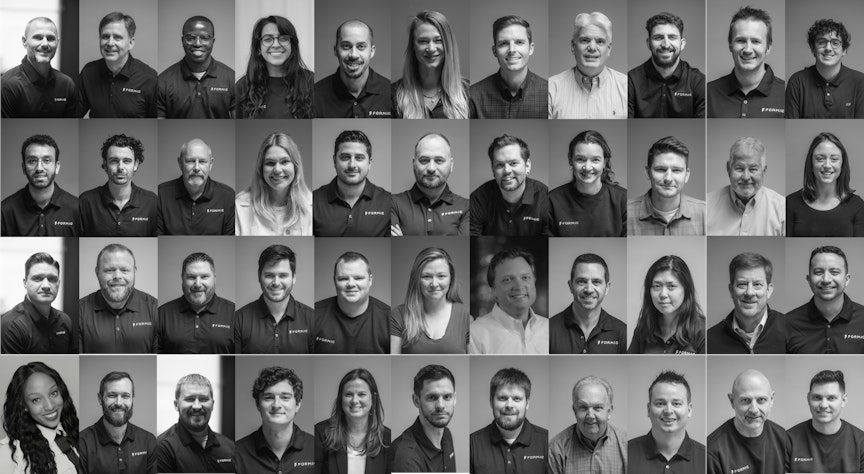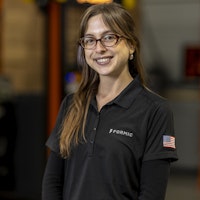We recently published our full-length book, Automate Now, built on 300+ years of combined manufacturing expertise. Below is a sneak peek at one of the most valuable chapters, Your End-of-Line Automation Roadmap, a practical guide to laying the foundation for automation success the first time.
Want the entire book? Get your free copy here.

Getting Started with Automation
You’re on board with the idea that automation can help your business. Now comes the big question: Where do you start?
The good news is, getting started with automation doesn’t have to mean reinventing your entire production floor overnight (in fact, please don’t). The key is to take a thoughtful, step-by-step approach: one that delivers early wins, builds confidence, and lays a strong foundation for future growth.
The best way to do that is with a clear automation roadmap. Because when it comes to automation, the smartest move is to start small, have success, and scale from there.
Chapter #4: Your End of Line Automation Roadmap
For many production operations, the production flow is likely to look something like what’s described below:
- Receiving: Dock, operations, staging, etc.
- Infeed & Pre-Treatment: Dosing, indexing, washing, etc.
- Processing: Mixing, cutting, drying, cooking, etc.
- Primary Packing Preparation: Weighing, sorting, metering, etc.
- Primary Packaging: Bagging, pouching, bottling, flow-wrapping, cartoning, etc.
- Quality Inspection: Check weighing, metal detection, vision, etc.
- Master Case Packing: Retail item in master case/container
- Case Sealing & Labeling: Sealing and labeling retail item containers
- Palletizing: Boxes/cases, RPCs, bags, pails, etc. stacked onto pallets
- Pallet Securement: Stretchwrap, strapping, cornerboarding, etc.
- Pallet Transport: Forklifts and/or pallet jacks moving palletized and secured pallets to storage, staging, or shipping dock
- Storage & Retrieval: Pulling pallets from inventory and staging them for shipping
There are many preliminary steps to deploying automation, but being strategic about what to automate first is the most important. It can be tempting to try and automate the most complex task on the production line first to have the greatest impact (don’t fall for the headfake!), but you will find greater automation success by starting with more straightforward but ergonomically demanding tasks to deliver quick wins in efficiency, cost savings, and worker safety. For many production operations, this means starting with the end of line workflows where you rely the most on manual labor.
Assuming no existing automation is on your production floor, this is the ideal order of operations when deploying automation on your production floor for the first time:
- Case Sealing: Taping or sealing the case or box shut
- Pallet Securement: Pallet stability for transport or storage
- Driven/Power Conveyor: Transporting materials down the production line
- Palletizing: Stacking of boxes or cases on pallets
- Case Erecting: Making or erecting boxes
- Case Packing: Packing products into cases or boxes
- Material Handling: Transport of finished pallets to staging areas, storage, or trucks
Here’s why you should automate your end of line first and how it sets you up for success.
Automating Case Sealing Operations
Case sealing has low operational complexity with an immediate high ROI, making it the easiest starting point on your automation journey. Shifting from manual taping and sealing to automated sealing ensures a secure case, providing more reliability and stability when palletizing and shipping your product.
Here’s the information and data you’ll need to collect to successfully automate your case sealing operations:
- Case and Product Specifications
- Case dimensions and weight (length, width, height, and weight variations)
- Material type (corrugated cardboard, plastic, etc.)
- Case quality and rigidity
- Variation in case sizes
- Case sealing method required
- Labeling Requirements
- Label type and material (paper, plastic, etc.)
- Label placement locations (top, side, corner wrap, multiple, etc.)
- Print specifications (barcodes, batch numbers, expiration dates, etc.)
- Label size and variability (standardized or dynamic label sizes)
- Production Line Data
- Current production speed (cases per minute/hour)
- Peak vs. average throughput
- Factory Floor and Space Constraints
- Available footprint for automation
- Case transport method
- Environmental factors
- Compliance and Safety Regulations
- OSHA safety standards
- GMP & FDA regulations
- Sanitation and cleanability requirements
Automation Comparison Summary (Low to High):
- Upfront Cost: Low - Requires a relatively low initial investment.
- Operational Complexity: Low - Integration with existing workflows is manageable.
- Service Complexity: Low - Maintenance and support needs are simple with light adjustments required to maintain consistency.
- Return on Investment (ROI): High - Delivers significant cost savings, efficiency improvements, and long-term productivity gains by eliminating damaged product and shipments.
- Total Cost of Ownership (TCO): Low - The long-term value typically offsets expenses.
Next, you can automate pallet securement.
Automating Pallet Securement
Pallet securement (aka stretch wrapping or strapping) has one of the highest ROIs compared to upfront costs and service complexity, but that doesn’t mean it’s a simple process. It requires detailed product and production data to ensure proper containment, stability, and efficiency.
Here’s the information and data you’ll need to collect to successfully automate your pallet securement operations:
- Pallet and Load Characteristics:
- Pallet dimensions (length, width, height)
- Pallet material (wood, plastic, metal, etc.)
- Load weight range (minimum and maximum weight)
- Load stability and stackability (does the load shift or need special treatment?)
- Load type (boxes, bags, drums, etc.)
- Height variability (do different loads require adjustments in wrapping or banding height?)
- Securement Method and Material Requirements
- Stretch wrapping
- Type of film (pres-stretched, standard, reinforced)
- Film gauge (thickness)
- Wrapping pattern (full wrap, cross wrap, roping, etc.)
- Number of wraps needed
- Dust cover requirements
- Strapping/banding
- Material type (plastic, steel, etc.)
- Tension strength requirements
- Number of straps per load
- Strap placement (horizontal, vertical)
- Stretch wrapping
- Throughput Requirements
- Current and target wrapping/strapping speed (pallets per hour)
- Variability in load sizes and securement needs (are some wrapped and some strapped?)
- Manual handling vs. fully automated line (conveyor-fed or forklift-fed?)
- Load Stability and Transport
- Vibration resistance needs (how far/roughly will the pallets be transported?)
- Load orientation and labelling (are barcodes/labels required to be visible?)
- Pallet stacking needs (will loads be stacked?)
- Compliance and Safety Regulations
- OSHA safety standards
- GMP & FDA regulations
- Sanitation and cleanability requirements
Automation Comparison Summary (Low to High):
- Upfront Cost: Low - Requires an initial investment, but not as high as fully customized automation solutions.
- Operational Complexity: Low - Integration with existing workflows is manageable.
- Service Complexity: Low - Maintenance and support needs are simple.
- Return on Investment (ROI): High - Delivers significant cost savings, efficiency improvements, and long-term productivity gains.
- Total Cost of Ownership (TCO): Low - The long-term value typically offsets expenses in a short period.
Next, you can automate your power conveyor.
Automating Driven/Power Conveyors
Driven or powered conveyors are the backbone of a connected production line, making them a natural next step after automating case sealing and pallet securement. By automating the movement of materials across the floor, you reduce manual handling, improve line efficiency, and enable seamless integration between upstream and downstream automation.
Here’s the information and data you’ll need to collect to successfully automate your conveyor systems:
- Conveyed Product Characteristics
- Product or case dimensions and weight range
- Bottom surface type (flat, uneven, slippery, etc.)
- Orientation needs (consistent facing or labeling direction)
- Fragility or special handling requirements
- Variability in case sizes or product shapes
- Line Layout and Flow Requirements
- Distance between equipment and process stations
- Floor space availability and layout constraints
- Desired path (straight, curves, inclines/declines)
- Accumulation needs or buffering zones
- Transfer points or equipment handoffs
- Conveyor Type and Features
- Conveyor type (belt, roller, chain, modular plastic)
- Powered vs. gravity-fed systems
- Zone control requirements (stop/start by section)
- Sensors and photo-eyes for product detection
- Safety features (stops, guards, enclosures)
- Throughput and System Integration
- Current and target line speeds (cases/min)
- Average vs. peak production volume
- Synchronization with upstream and downstream automation
- PLC/HMI compatibility and controls integration
- Communication protocols (Ethernet/IP, Modbus, etc.)
- Compliance and Safety Regulations
- OSHA compliance and lockout/tagout standards
- Guarding for pinch points and moving parts
- Sanitation and cleanability for regulated environments
- Environmental considerations (dust, moisture, temperature)
- Emergency stop and manual override systems
Automation Comparison Summary (Low to High):
- Upfront Cost: Moderate – Higher than case sealers but scalable depending on layout and requirements.
- Operational Complexity: Moderate – Requires thoughtful design to align with overall line flow and automation strategy.
- Service Complexity: Low – Regular maintenance and occasional adjustments needed; most conveyor systems are highly reliable.
- Return on Investment (ROI): High – Reduces manual transport, eliminates unnecessary touches, and boosts production flow.
- Total Cost of Ownership (TCO): Moderate – Energy use and wear components exist, but long life span and impact on efficiency outweigh costs.
Next, you can move on to automated palletizing.
Want to finish the chapter? Get your free copy here.


